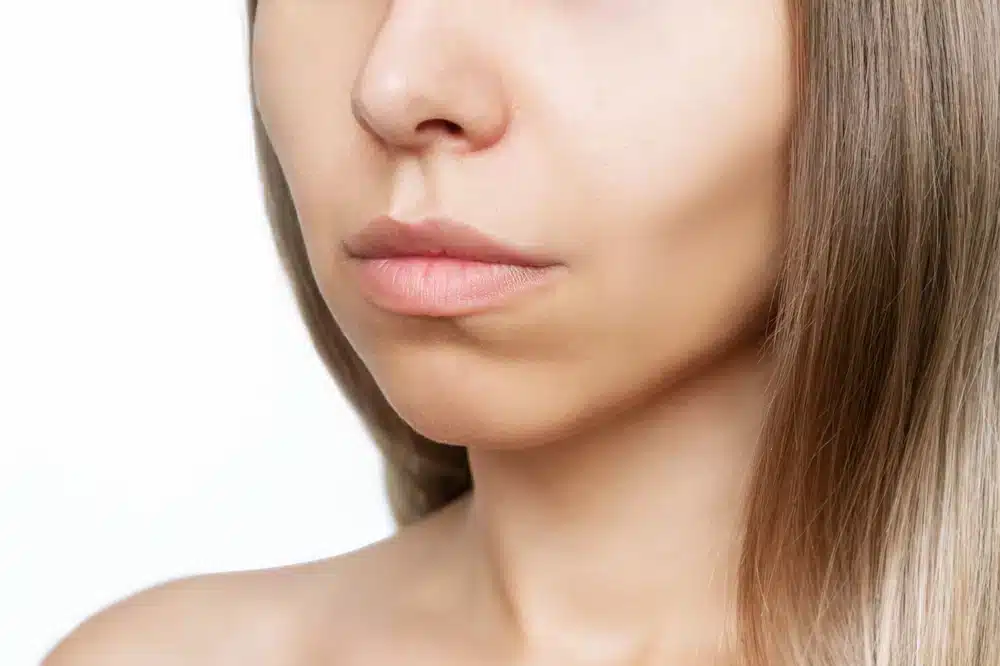Wondering if slimmer cheeks and a crisper jawline are possible without going under the knife? Buccal fat removal without surgery explores non-invasive options to enhance facial definition while avoiding traditional plastic surgery. This guide shows what’s realistic, who benefits, and how to pursue cheek reduction surgery results with modern approaches.
From targeted skincare to device-based therapies, today’s innovations can subtly slim and contour. We’ll demystify what actually works, when small tweaks beat big changes, and where surgical procedures still shine. By the end, you’ll know which paths suit your timeline, comfort level, and goals—and how to get natural-looking facial aesthetics.

Why Do People Get Buccal Fat Removal?
Most people seek buccal fat removal to create a slimmer, more contoured midface and better balance between the cheeks and lower face. When the buccal fat pads are prominent, the midface can look round even at a healthy weight. Reducing that fullness can enhance facial slimming and highlight features like the cheekbones and jawline.
Motivations vary—refining proportions for photographs, aligning appearance with fitness progress, or correcting asymmetry after weight changes. Others consider it when fillers or skin-tightening alone can’t achieve their goals. Ultimately, it’s a personal decision about facial aesthetics and harmony; some prefer non-invasive steps first, while others choose definitive surgical procedures for a long‑term change.
Non-Surgical Alternatives for Buccal Fat Pad Removal
Not everyone is ready for surgery, and that’s where modern aesthetic treatment paths come in. Advances in technology now offer non-surgical options designed to refine cheek contours and reduce fullness without incisions or lengthy recovery. These approaches can be appealing for those seeking subtle, natural enhancements while maintaining flexibility in their overall care plan.
Dermal Fillers
Facial fillers can be used as an injectable treatment to create the illusion of slimmer cheeks by adding subtle volume in strategic areas like the jawline or cheekbones. While they don’t remove fat cells directly, pairing fillers with Kybella (injection lipolysis) can target small fat deposits. Together, these methods refine contour without surgery.
Coolsculpting
CoolSculpting is a device-based procedure that uses cryolipolysis to freeze and gradually break down stubborn fat deposits in the cheek and chin area. By targeting these cells without incisions, the body naturally eliminates them over time. Results develop slowly but can deliver a more refined contour without the downtime of surgery.
Facetite Treatment
Facetite is a minimally invasive cosmetic treatment that uses radiofrequency lipolysis to gently melt fat and tighten skin beneath the cheeks. This dual action makes it a strong option for those who want more definition without extensive surgery. The procedure can smooth contours and refine cheek volume with relatively quick recovery.
SculpSure
SculpSure is a non-invasive laser contouring system that uses targeted heat to break down stubborn cheek and chin fat. Through controlled energy delivery, it disrupts fat cells which the body naturally eliminates over time. While it doesn’t remove buccal fat pads directly, pairing SculpSure with laser lipolysis techniques in nearby areas can enhance overall contour and create a slimmer facial profile without surgery.
Philadelphia’s Premier Double Board Certified Facial Plastic Surgeon & Rhinoplasty Specialist.
Dr. Lozada is a facial sculpting expert who can help you achieve your desired aesthetic results.

Natural Ways to Deal With Double Chin and Cheek Fat Reduction
Lifestyle choices also play a powerful role in how your face looks day to day. While they won’t remove buccal fat pads directly, healthy routines can reduce overall puffiness and keep cheeks looking balanced. For many, it’s reassuring to know there are ways to refine the appearance of cheeks without surgery through everyday habits.
Diet and Exercise
Traditional weight loss strategies, like balanced nutrition and consistent cardio, help reduce overall body fat and can make the face appear leaner. Some people add facial exercises to their routine, though evidence is mixed. Still, these habits support long‑term health and may naturally slim the midface without medical intervention.
Adequate Sleep
Consistent, high‑quality sleep helps regulate hormones that influence fluid retention and facial puffiness. Aim for a steady schedule and 7–9 hours nightly to support lymphatic drainage and skin recovery. Reducing late‑night alcohol, excess salt, and screen time can minimize morning swelling. Over time, better sleep hygiene keeps the midface looking fresher and more defined—complementing lifestyle changes without medical intervention.
Should I Get Buccal Fat Removal Surgery?
Deciding whether to undergo buccal fat removal surgery depends on your unique anatomy, goals, and comfort with recovery time. Some individuals with naturally fuller cheeks may benefit from the procedure, while others achieve their desired contour through lifestyle changes or non‑surgical approaches.
The best way to know is through a personalized consultation. A qualified specialist evaluates factors like facial balance, skin elasticity, and long‑term goals before recommending the most effective path. For some, surgery provides lasting refinement; for others, less invasive steps may be the smarter first move.

Choosing a Facial Contouring Surgeon
Facial contouring is nuanced. An experienced facial plastic surgeon evaluates bone structure, fat distribution, skin quality, and bite dynamics to recommend the safest, most effective path. Whether you’re exploring cosmetic surgery and non-surgical treatments, precision planning minimizes risks, prevents over-thinning, and prioritizes natural balance so your results age gracefully—on camera and in real life.
Dr. Kirk Lozada is a double board‑certified facial sculpting expert known for natural outcomes and minimal downtime. Trained with top teams in Philadelphia, New York, and New Jersey and active in the AAFPRS, he tailors every plan to your goals. Ready to talk options? Call 267‑817‑4600 or visit our contact page to schedule a consultation.